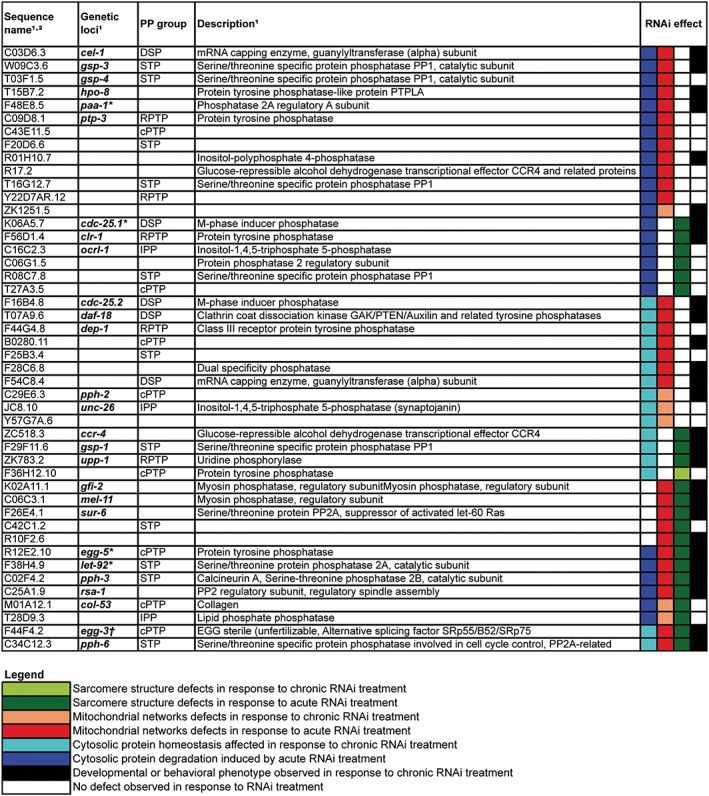Figure 4.

Phosphatases required for multiple aspects of normal muscle development and/or homeostasis. The same RNA interference screening protocol as used for the kinome requirement of muscle was utilized20 with phosphatase‐encoding genes being targeted. Briefly, for chronic RNA interference treatment, four L4 larvae animals and two following generations of progeny were cultured on RNA interference bacteria clones. For both generations at 72–96 h after L4 transfer, progeny were observed on two consecutive days using microscopy for sarcomere structure, mitochondrial structure, or protein homeostasis. For acute RNA interference treatment, synchronized adult worms grown on OP50 were transferred to RNA interference bacteria seeded plates and observed at 24 h for structure and at 48 and 72 h for all phenotypes. The impact of knockdown of phosphatases where a defect was noted in muscle is colour‐coded and displayed according to the inset legend, instances in which a whole animal defect was noted are indicated in black. Only RNA interference treatments that produced a defect in at least two of the subcellular phenotypes assayed (e.g. protein homeostasis, mitochondrial morphology, and sarcomere structure) are displayed. Genes for which chronic RNA interference induced an embryonic lethal phenotype in all three screens are labelled with asterisk; dagger indicates embryonic lethality only in the proteostasis screen.
